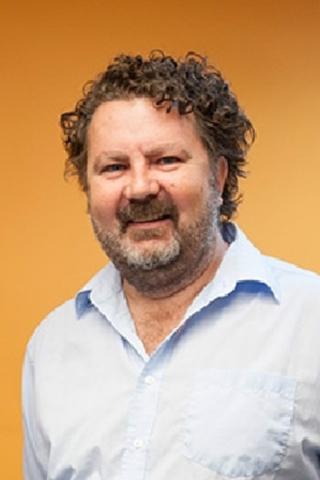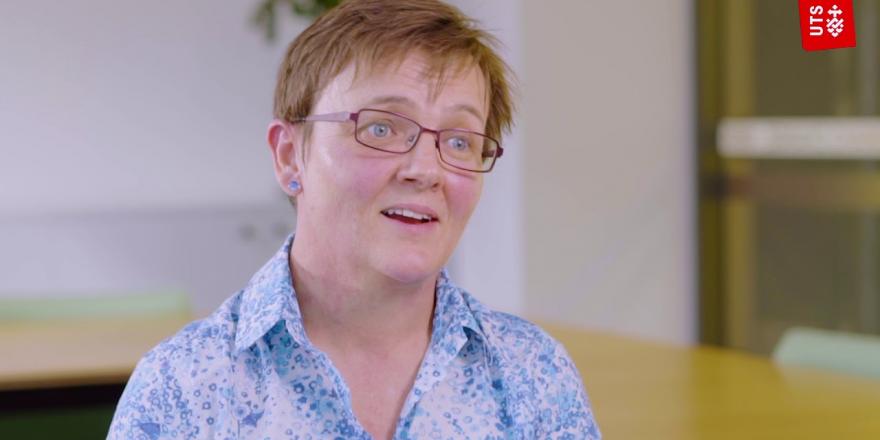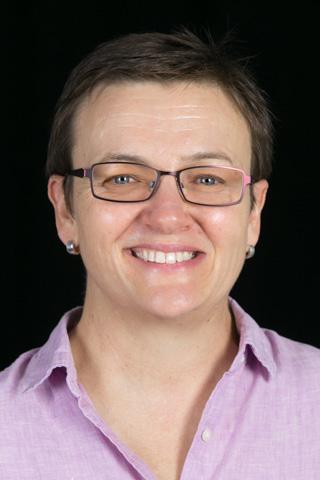Professor Cynthia Whitchurch has spent her academic life trying to truly understand one of the simplest forms of life on Earth, bacteria, with the aim of exploiting her findings to develop innovative ways to control infections.
Her work has important implications. Understanding how bacteria behave is key to controlling their spread and fighting the rise of antibiotic-resistant strains, says Whitchurch, the founding director of the Microbial Imaging Facility at UTS.
It is work that is also paying dividends with Whitchurch’s discoveries now being embraced by the medical implants industry with outstanding success.
One company has noted a 50 per cent reduction in infection rates – and a $10 million saving in revision treatment – after design changes, informed by Whitchurch’s work, were made to its implantable device.
Her team is also working with a Sydney-based company to limit infections from catheters, one of the most common sources of hospital-acquired infections.
A key discovery underpinning this collaboration is Whitchurch’s revelation that bacterial communities – known as biofilms – follow pathways reinforced by continual use. It’s the same principle that underpins the movement of ants, traffic and even the internet.
Critical in helping Whitchurch visualise and better understand the collective movement of bacteria was the UTS Data Arena, which allowed her to interact in 3D with the bacteria as they moved across a surface.
“We were able to easily see in the whole biofilm where cells were moving fast. That revealed behaviours we really couldn't have appreciated in any other way,” she says.
We were able to easily see in the whole biofilm where cells were moving fast. That revealed behaviours we really couldn't have appreciated in any other way.
— Professor Cynthia Whitchurch, founding director, UTS Microbial Imaging Facility
Having identified these patterns, Whitchurch looked for ways to exert what she calls ‘mind control’ over the bacteria’s behaviour.
“In the lab, we’ve made some two-dimensional surfaces where we put a parallel series of furrows in the way of the bacteria,” she explains.
“When they hit that surface, they end up running up and down these furrows, which slows their overall migration rate. So they’re going where we want them to go instead of where they want to go.”
In an era of multi-drug-resistant superbugs, this groundbreaking work will grow in relevance as advances in medical technology and an ageing population will see an increased use of medical devices such as cardiac pacemakers, artificial joint replacements, prosthetic heart valves and catheters.
A halving of infection rates from implant surgeries – an outcome already proven by her work – has the potential to dramatically cut healthcare costs and risks associated with replacement devices.
This work also builds on another significant discovery in which Whitchurch demonstrated that individual bacterial cells can ‘altruistically’ explode, releasing DNA that their fellow bacteria then use to build biofilms and continue the spread of infection.
“We’ve discovered that the extracellular DNA released through exploding cells is very important in enabling the remaining bacteria to coordinate their behaviours … and be really highly organised when they’re running through this furrow network,” she says. “It even enables them to build those furrows, because they use it to glue themselves together to combine enough power to be able to gouge out the furrows.”
These findings are the linchpins in a body of work that is influencing further discoveries internationally with her 2002 Science paper, which showed for the first time that extracellular DNA is required for biofilm formation, one of the most cited in its field.
In 2017, Whitchurch became the first woman in 30 years to be awarded the David Syme Research Prize.
Research team
-
Professor, ithree Institute
-
Professor, School of Mathematical and Physical Sciences
-
 Ben SimonsTechnical Director, UTS Data Arena, eResearch Support
Ben SimonsTechnical Director, UTS Data Arena, eResearch Support
Additional team members
Michelle Gee, University of Melbourne
Scott Wade, Swinburne University of Technology
Facilities
Funded by
- Australian Research Council
- National Health and Medical Research Council



